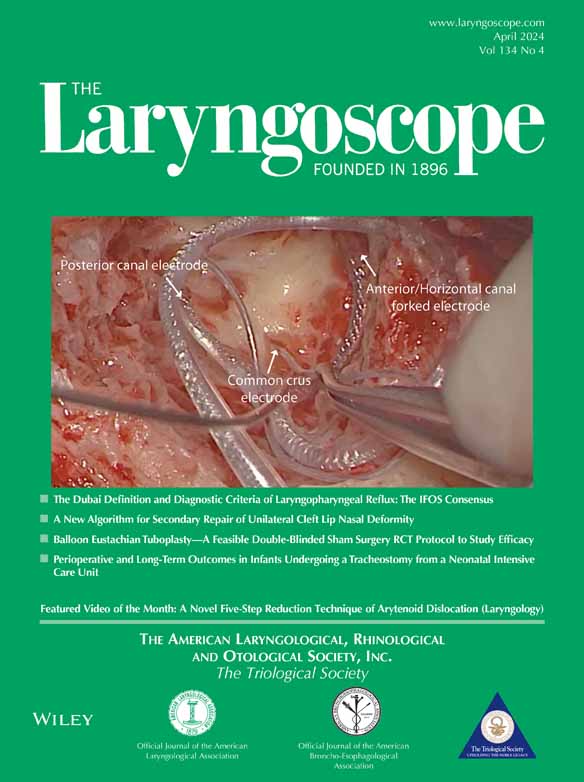Preoperative Imaging and Surgical Findings in Pediatric Frontonasal Dermoids
Dr. Bly is a cofounder and holds a financial interest of ownership equity with Wavely Diagnostics Inc and Apertur Inc. He is a consultant and stockholder, Spiway LLC. These are not related to this study. All other authors do not have information to disclose.
Dr. Amin was supported by the T32DC000018 from the National Institute on Deafness and Other Communication Disorders during his work on this study. Dr. Bly is supported by the Research Integration Hub, Pilot Awards Support Fund Program.
Meeting Information: Preliminary Data- Poster Presentation, American Society of Pediatric Otolaryngology Annual Meeting, Boston, MA, April 2015.
Abstract
Objective
To review cases of congenital frontonasal dermoids to gain insight into the accuracy of preoperative computed tomography (CT) and magnetic resonance imaging (MRI) in predicting intracranial extension.
Methods
This retrospective study included all patients who underwent primary excision of frontonasal dermoids at an academic children's hospital over a 23-year period. Preoperative presentation, imaging, and operative findings were reviewed. Receiver operating characteristic (ROC) statistics were generated to determine CT and MRI accuracy in detecting intracranial extension.
Results
Search queries yielded 129 patients who underwent surgical removal of frontonasal dermoids over the study period with an average age of presentation of 12 months. Preoperative imaging was performed on 122 patients, with 19 patients receiving both CT and MRI. CT and MRI were concordant in the prediction of intracranial extension in 18 out of 19 patients. Intraoperatively, intracranial extension requiring craniotomy was seen in 11 patients (8.5%). CT was 87.5% sensitive and 97.4% specific for predicting intracranial extension with an ROC of 0.925 (95% CI [0.801, 1]), whereas MRI was 60.0% sensitive and 97.8% specific with an ROC of 0.789 (95% CI [0.627, 0.950]).
Conclusion
This is the largest case series in the literature describing a single institution's experience with frontonasal dermoids. Intracranial extension is rare and few patients required craniotomy in our series. CT and MRI have comparable accuracy at detecting intracranial extension. Single-modality imaging is recommended preoperatively in the absence of other clinical indications.
Level of Evidence
4 Laryngoscope, 134:1961–1966, 2024




